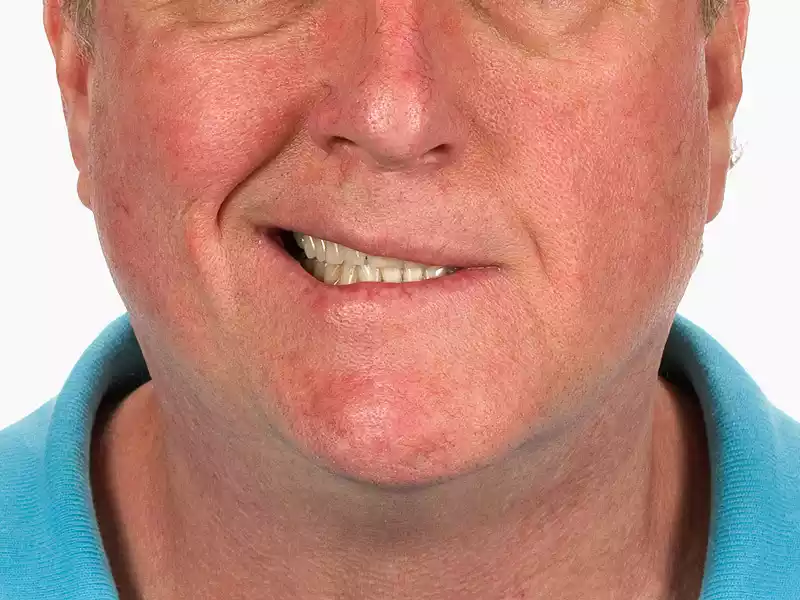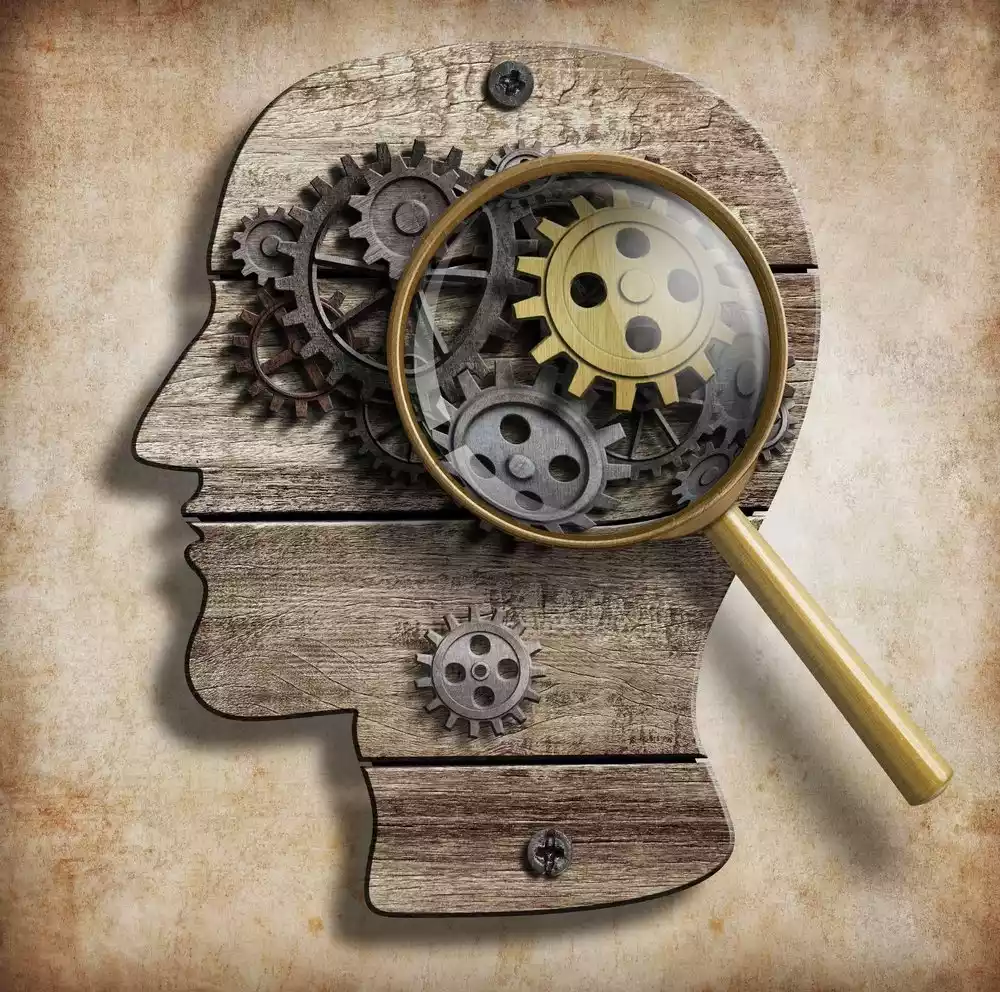Tardive Dyskinesia and Akathisia are both neurological disorders often associated with the use of antipsychotic medications. TD is characterized by involuntary, repetitive, and often rhythmic movements, predominantly affecting the face, jaw, and extremities. These movements arise from prolonged exposure to certain drugs, typically spanning months to years. Akathisia, on the other hand, presents as a compelling inner restlessness and an overwhelming urge to move.
Patients might pace, rock, or constantly shift when seated. Unlike TD, Akathisia can manifest within hours to weeks after starting, changing, or discontinuing specific medications. Both conditions underscore the critical importance of close monitoring during medication management to ensure patients’ safety and well-being.
What is Tardive Dyskinesia?
Tardive Dyskinesia (TD) is a neurological syndrome characterized by involuntary, repetitive, and often rhythmic movements. It’s most commonly associated with prolonged use of dopamine receptor-blocking agents, particularly antipsychotic medications. Other medications and conditions can also lead to TD.

Characteristics and Symptoms of TD include:
- Facial Movements: Such as grimacing, tongue protrusions, and lip smacking.
- Choreic Movements: Rapid, random, and jerky movements.
- Dystonic Movements: Slow or sustained movements, which can lead to abnormal postures. This might include twisting movements or sustained muscle contractions.
- Movements of the Extremities: Finger movements, or movement of the arms or legs.
- Other Movements: Such as rocking or twisting of the trunk.
The onset of TD is typically insidious, and the movements are often initially intermittent and can become continuous over time. Due to its association with the long-term use of antipsychotic medications, the condition underscores the importance of regular monitoring when using these drugs. Additionally, the risk of developing TD increases with the duration of medication usage and the total cumulative dose.
Early detection and management are crucial, as the condition can be irreversible even after discontinuation of the offending medication. However, some patients may experience improvement or even resolution of symptoms upon discontinuation of the causative drug. In recent years, medications like valbenazine and deutetrabenazine have been approved for the treatment of TD, offering new hope for affected individuals.
Causes of Tardive Dyskinesia
Tardive Dyskinesia (TD) is primarily associated with the use of certain medications, especially those affecting dopamine transmission in the brain. The primary causes and risk factors include:
- Antipsychotic Medications: Both typical (first-generation) and atypical (second-generation) antipsychotics are associated with TD, though the risk is generally higher with the first-generation ones.
- Typical Antipsychotics: Include haloperidol, fluphenazine, chlorpromazine, thioridazine, and others.
- Atypical Antipsychotics: While these have a reduced risk of TD compared to first-generation agents, they are not devoid of risk. Examples include risperidone, olanzapine, and aripiprazole.
- Other Medications: Some other drugs, not primarily antipsychotics, can also increase the risk of TD:
- Metoclopramide (a gastrointestinal prokinetic agent)
- Reserpine (an old antihypertensive drug)
- Duration and Dosage: Prolonged use of dopamine receptor-blocking agents and high dosages can increase the risk of TD.
- Age: Older adults, especially postmenopausal women, are at a higher risk.
- Alcohol and Substance Abuse: Some studies suggest that substance abuse can increase the risk.
- Other Risk Factors:
- Diabetes mellitus
- Mood disorders
- Previous exposure to antipsychotic medications, even if it was brief
- Unknown Causes: In some cases, the exact cause of TD remains unknown, and it can appear in individuals without a clear history of exposure to causative medications.
While the exact pathophysiology of TD is not fully understood, it is believed to result from neuroadaptive changes in dopamine transmission after prolonged exposure to dopamine-blocking agents. Early recognition and intervention are crucial as the disorder can be irreversible even after discontinuation of the causative medication in some individuals.
What is Akathisia?
Akathisia is a movement disorder characterized by a subjective feeling of inner restlessness accompanied by motor manifestations, such as the inability to remain still. It is most commonly associated with the use of antipsychotic medications, though other drugs can also induce akathisia.

Characteristics and Symptoms of Akathisia include:
- Subjective Feelings: Patients often describe an intense urge or compulsion to move, often accompanied by feelings of unease or discomfort.
- Motor Restlessness: This may manifest as pacing, shuffling, rocking from foot to foot, or constantly shifting weight from one leg to another.
- Constant Movement: Inability to sit or stand still; people with akathisia might appear “fidgety” or “anxious” due to the constant movement.
- Impact on Behavior and Mood: In some individuals, akathisia can lead to irritability, impatience, and even aggression or suicidal thoughts.
The onset of akathisia can be acute, appearing within hours to days of starting, changing the dose, or discontinuing a medication. It’s essential to recognize and address the symptoms early, as they can severely affect a person’s quality of life and may lead to noncompliance with medication, given the distress it causes.
Management of akathisia usually involves adjusting the dosage of the causative drug, switching to a different medication, or adding medications that counteract the symptoms, such as beta-blockers (like propranolol), benzodiazepines, or anticholinergic drugs.
Causes of Akathisia
Akathisia is primarily induced by medications, especially those that affect the dopamine and serotonin pathways in the brain. The primary causes and risk factors include:
- Antipsychotic Medications: Both first-generation (typical) and second-generation (atypical) antipsychotics can induce akathisia.
- Typical Antipsychotics: Such as haloperidol and fluphenazine.
- Atypical Antipsychotics: Such as risperidone, aripiprazole, and lurasidone. The risk varies among the atypical antipsychotics.
- Antidepressants: Especially selective serotonin reuptake inhibitors (SSRIs) like fluoxetine, paroxetine, and sertraline. Other classes like serotonin-norepinephrine reuptake inhibitors (SNRIs) can also be culprits.
- Antiemetic Medications: Drugs like metoclopramide and prochlorperazine, which are used for nausea and vomiting, can cause akathisia due to their dopamine receptor-blocking properties.
- Antivertigo Drugs: Such as meclizine.
- Mood Stabilizers: For example, lithium.
- Drugs for Infectious Diseases: Some antiviral and antimalarial drugs have been associated with akathisia.
- Adjustment of Medication: Starting, stopping, or changing the dose of a medication, especially antipsychotics or antidepressants, can lead to akathisia.
- Neurological Conditions: While rarer, some neurological disorders like Parkinson’s disease or traumatic brain injuries can be associated with akathisia.
- Idiopathic: In some cases, the exact cause of akathisia might remain unidentified.
The pathophysiology of akathisia is not completely understood, but it is believed to be related to an imbalance in dopaminergic and serotonergic pathways in the brain. It’s important to recognize and manage akathisia early, as it can significantly affect a person’s quality of life and may lead to medication noncompliance due to the distress it causes.
Comparison Table of Tardive Dyskinesia and Akathisia
Here’s a comparison table between Tardive Dyskinesia (TD) and Akathisia:
| Feature | Tardive Dyskinesia | Akathisia |
|---|---|---|
| Definition | Neurological disorder characterized by involuntary, repetitive, and often rhythmic movements, predominantly of the face, lips, tongue, extremities, or trunk. | Movement disorder characterized by a subjective feeling of inner restlessness and an urge to move, accompanied by motor restlessness. |
| Primary Causes | Long-term use of dopamine receptor-blocking agents, especially antipsychotics. | Use of antipsychotic medications, some antidepressants, and other drugs affecting dopamine and serotonin pathways. |
| Onset | Typically appears after prolonged exposure to causative drugs (months to years). | Can appear within hours to weeks of starting, changing the dose, or discontinuing a medication. |
| Primary Symptoms | Facial grimacing, tongue protrusions, lip smacking, choreic or dystonic movements, movements of extremities. | Inner feeling of restlessness, pacing, rocking, fidgeting, inability to remain still. |
| Affected Areas | Often face, jaw, and extremities. | General body restlessness. |
| Pathophysiology | Believed to result from neuroadaptive changes in dopamine transmission after prolonged exposure to dopamine-blocking agents. | Related to an imbalance in dopaminergic and serotonergic pathways. |
| Treatment Approaches | Reducing or discontinuing the causative drug, using medications like valbenazine or deutetrabenazine. | Adjusting the dosage or discontinuing the causative drug, introducing beta-blockers, benzodiazepines, or anticholinergics. |
| Potential for Reversibility | Can be irreversible in some individuals even after discontinuation of the causative drug. Some may experience improvement or resolution. | Symptoms often improve or resolve upon adjustment or discontinuation of the causative medication. However, severe cases might require more complex management. |
This table provides a concise comparison between TD and Akathisia, highlighting the distinct features of each condition.
Complications of Tardive Dyskinesia and Akathisia
Both Tardive Dyskinesia (TD) and Akathisia can lead to several complications, ranging from physical challenges to psychosocial issues.
Tardive Dyskinesia (TD)
- Physical Complications:
- Oral Issues: Constant lip smacking or tongue thrusting can lead to dental issues or injury to the inside of the mouth.
- Swallowing Difficulties: In severe cases, TD can impact the ability to swallow, leading to aspiration or choking hazards.
- Speech Difficulties: TD can cause challenges in articulation and clarity of speech.
- Breathing Issues: If TD affects the respiratory muscles, it might cause difficulties in breathing.
- Muscle Issues: Chronic involuntary movements can cause muscle strain or discomfort.
- Psychosocial Complications:
- Social Isolation: Due to self-consciousness about visible symptoms.
- Employment Challenges: Depending on the severity of movements and their impact on functionality.
- Mental Health: Depression, anxiety, or lowered self-esteem can arise due to the chronic nature of the condition or its impact on daily life.
Akathisia
- Physical Complications:
- Fatigue: Continuous movement and an inability to rest can lead to significant fatigue.
- Sleep Disturbances: The inner restlessness can make it difficult to fall or stay asleep.
- Muscle Discomfort: Constant pacing or movement can result in muscle pain or discomfort.
- Psychosocial Complications:
- Impaired Quality of Life: The distress from continuous restlessness can significantly hamper daily activities and overall quality of life.
- Social Challenges: It can be distressing in social situations, leading to avoidance of gatherings or public places.
- Mental Health: The distressing nature of akathisia can lead to anxiety, depression, or even suicidal ideation in severe cases.
For both conditions, there’s also the added complication of medication noncompliance. Due to the distressing nature of these side effects, some individuals might be hesitant to continue medications, potentially leading to relapse or worsening of the primary psychiatric condition for which the drugs were prescribed.
Lastly, it’s essential to note that while these complications are potential concerns, their severity and impact can vary widely among individuals. Not everyone will experience all or even most of these complications. Proper management, therapy, and supportive care can significantly mitigate many of these issues.
How to diagnosis of Tardive Dyskinesia and Akathisia
Diagnosing Tardive Dyskinesia (TD) and Akathisia primarily involves clinical observation and taking a thorough patient history. While there’s no definitive laboratory test to diagnose either condition, the following steps are typically taken:

Tardive Dyskinesia (TD):
- Detailed Medical History: Determine the patient’s exposure to causative medications, especially antipsychotics. Understand the duration, type, and dose of medication used.
- Clinical Observation: Observe the patient for involuntary movements, especially around the mouth, jaw, face, and extremities. Movements can range from subtle to more obvious.
- Assessment Scales: Instruments such as the Abnormal Involuntary Movement Scale (AIMS) can be used to rate the severity and distribution of the movements.
- Rule Out Other Causes: Before diagnosing TD, it’s essential to rule out other potential causes of involuntary movements such as:
- Other types of drug-induced movement disorders
- Neurological conditions (e.g., Huntington’s disease, Wilson’s disease)
- Metabolic conditions (e.g., hyperthyroidism)
- Neuroimaging: While not routinely done for diagnosis, imaging like MRI can help rule out structural brain abnormalities causing similar symptoms.
Akathisia:
- Detailed Medical History: Evaluate recent changes in medications, especially the introduction, discontinuation, or dosage adjustment of antipsychotics or other potential causative drugs.
- Patient’s Subjective Experience: Ask about feelings of inner restlessness, discomfort, or the urge to move. It’s crucial to differentiate between the inner experience of restlessness and the visible motor restlessness.
- Clinical Observation: Observe the patient for motor restlessness, like fidgeting, shifting weight, pacing, or an inability to sit still.
- Assessment Scales: The Barnes Akathisia Rating Scale (BARS) is a standardized tool to rate the severity of akathisia and can be valuable in both diagnosing and monitoring the condition.
- Rule Out Other Causes: Before diagnosing akathisia, consider other potential reasons for restlessness:
- Anxiety disorders
- Restless leg syndrome
- Drug withdrawal syndromes
- Other movement disorders
In both conditions, a critical component of diagnosis is to consider the temporal relationship between medication use and symptom onset. For both TD and akathisia, cessation or change of medication can sometimes help in confirming the diagnosis, but this should only be done under medical supervision.
Treatment Approach for Tardive Dyskinesia and Akathisia
The management of Tardive Dyskinesia (TD) and Akathisia is multifaceted, and the approach can vary based on the severity of symptoms, causative agents, and individual patient needs. Below are the general treatment strategies for both conditions:
Tardive Dyskinesia (TD)
- Medication Review and Modification:
- If possible, reduce the dose of the causative antipsychotic or discontinue it altogether.
- However, the decision should weigh the risk of psychiatric relapse.
- Switching to an atypical antipsychotic with a lower risk of TD may be considered, though this does not guarantee improvement.
- Specific Treatments for TD:
- Valbenazine (Ingrezza) and Deutetrabenazine (Austedo): These are VMAT2 inhibitors approved specifically for TD treatment. They work by regulating dopamine release in neural synapses.
- Tetrabenazine: Previously used off-label for TD before the approval of the above two drugs.
- Other Interventions:
- Antioxidants like vitamin E have been studied for TD, but evidence for efficacy is mixed.
- Botulinum toxin injections can be beneficial for focal dystonias, a component of TD, especially if localized to a particular area like the face.
- Avoidance of Exacerbating Drugs: Drugs like stimulants or other dopamine-enhancing medications may worsen TD and should be avoided.
- Supportive and Rehabilitative Therapies: Physical therapy, occupational therapy, and speech therapy might be helpful, depending on the areas affected.
Akathisia
- Medication Review and Modification:
- The first step is typically to reduce the dose of the causative drug or stop it if clinically appropriate.
- If discontinuation is not possible, consider switching to another medication with a lower risk of inducing akathisia.
- Pharmacological Interventions:
- Beta-blockers: Propranolol is the most commonly used drug for akathisia and has the best evidence supporting its use.
- Benzodiazepines: Lorazepam and diazepam can be beneficial.
- Anticholinergic drugs: Sometimes used, though the evidence for efficacy is mixed.
- Mirtazapine: An antidepressant that has shown some efficacy in treating akathisia.
- Avoidance of Exacerbating Drugs: Drugs that can potentially exacerbate akathisia, like certain antidepressants or caffeine, should be used cautiously.
- Support and Counseling: Given the distressing nature of akathisia, supportive counseling and psychoeducation are essential. Patients should be made aware of the condition, its causes, and the treatment plan.
For both TD and akathisia, close monitoring and regular follow-ups are crucial, as the effectiveness of the treatment and potential side effects need to be assessed. Patient comfort and quality of life should always be at the forefront of any treatment decision.
Coping Strategies of Tardive Dyskinesia and Akathisia
Coping with movement disorders like Tardive Dyskinesia (TD) and Akathisia can be challenging due to their physical manifestations and the emotional toll they can impose.
Effective coping strategies not only help in managing the symptoms but also improve overall quality of life:
General Coping Strategies:
- Education: Understand the condition. Being informed can help individuals feel more in control and less anxious about what’s happening to them.
- Seek Support: Joining support groups or online communities can be beneficial. Sharing experiences with others who have similar conditions can offer comfort and practical advice.
- Stay Active: Physical activity, in general, can be therapeutic. Gentle exercises, like walking or tai chi, can help divert the mind and improve mood.
- Mindfulness and Relaxation Techniques: Meditation, deep breathing exercises, and progressive muscle relaxation can reduce anxiety and improve overall well-being.
- Occupational Therapy: Working with an occupational therapist can help in developing strategies to cope with daily tasks that might be affected by movement disorders.
Coping with Tardive Dyskinesia:
- Speech and Swallowing Exercises: If TD affects the facial muscles, working with a speech therapist can help improve speech and swallowing difficulties.
- Avoid Triggers: Some individuals might find that certain foods, drinks, or medications can exacerbate their symptoms. Keeping a journal can help in identifying these triggers.
- Wearable Devices: Using gloves or weighted wristbands can sometimes help control arm or hand movements.
Coping with Akathisia:
- Distraction Techniques: Engage in activities that divert attention from the restlessness, like reading, listening to music, or crafting.
- Scheduled Rest Breaks: If possible, schedule short rest breaks during the day to lay down or engage in relaxation techniques.
- Comfortable Environment: Ensure the environment, especially seating arrangements, is comfortable. Soft cushions or recliners might help in reducing the urge to move.
- Foot Massages or Warm Baths: These can sometimes help in alleviating symptoms temporarily.
Regardless of the condition, it’s essential to maintain open communication with healthcare providers. Regularly discussing symptoms, treatment effects, and challenges ensures that the care plan remains adaptive to changing needs. And always remember, seeking mental health support when needed is crucial, as these disorders can sometimes lead to feelings of isolation or depression.
Conclusion
Tardive Dyskinesia (TD) and Akathisia are both movement disorders primarily linked to the use of certain medications, especially antipsychotics. TD is characterized by involuntary, repetitive movements, predominantly of the face and extremities, while Akathisia involves an inner feeling of restlessness coupled with motor agitation. Both conditions pose challenges in terms of diagnosis, management, and the physical and psychological impact on affected individuals.
While there are treatments and coping strategies available to mitigate symptoms and improve quality of life, ongoing research seeks to understand these disorders better and develop more effective interventions. Awareness, early recognition, and timely medical intervention are crucial in managing these conditions and enhancing patients’ overall well-being.



